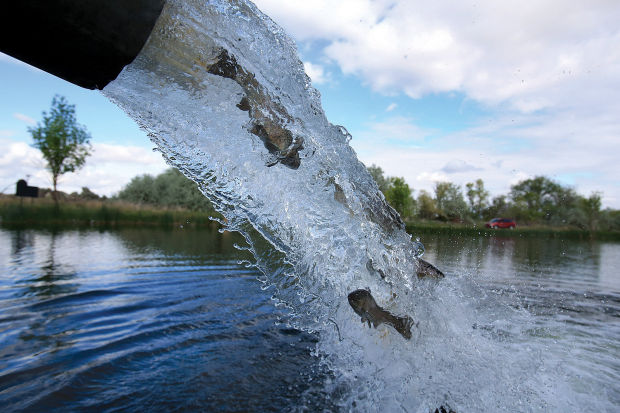By Douglas Thompson / APRIL 10, 2015
NEW LONDON, Connecticut.
[dropcap]W[/dropcap]ith the long winter now behind us (I hope), I’m about to head out to the nearby Salmon River here in Connecticut to see what a season’s worth of ice has done to the place. Now that fishing season has arrived, the river no doubt will be crowded with newly stocked fish and wader-clad fishermen who share my passion for this sleek and beautiful creature. But my rod will be collecting dust at home. I reluctantly gave up fishing 10 years ago after I saw what a century of stocking nonnative fish was doing to the landscape I love.
Twenty-eight million Americans will buy freshwater fishing licenses this year. Eight million of them will be trout and salmon anglers. Native wild trout have mostly disappeared in the face of this immense fishing pressure. They have been replaced by nonnative hatchery fish and their river-born “wild” trout offspring. Nationwide, state and federal fisheries agencies dump some 130 million trout in lakes, rivers and streams each year. Although this stocking lures people outside, the hatcheries that produce these trout create environmental problems.
Trout aquaculture is heavily reliant on pellet feed. The federal and state hatchery production of some 28 million pounds of trout per year requires roughly 34 million pounds of feed. These pellets are derived from herring, menhaden and anchovies harvested from oceans in quantities that the United States Department of Agriculture and the National Oceanic and Atmospheric Administration say are unsustainable. We are devastating populations of marine species simply to support a freshwater hobby.
If that’s not bad enough, hatcheries are major polluters. Each year, much of the roughly six million pounds of fish excrement, uneaten food and dead and decaying fish that I estimate are produced by these hatcheries leach nutrients into wastewater that is often then dumped untreated into the closest stream or river. This wastewater can also contain medicines and antibiotics used to limit diseases in crowded pens, and disinfectants that sterilize holding tanks. Ultimately, these hatcheries may be contributing to the proliferation of “dead zones” — biological wastelands created by excess nutrients — that are choking estuaries and coastal ecosystems downstream.


